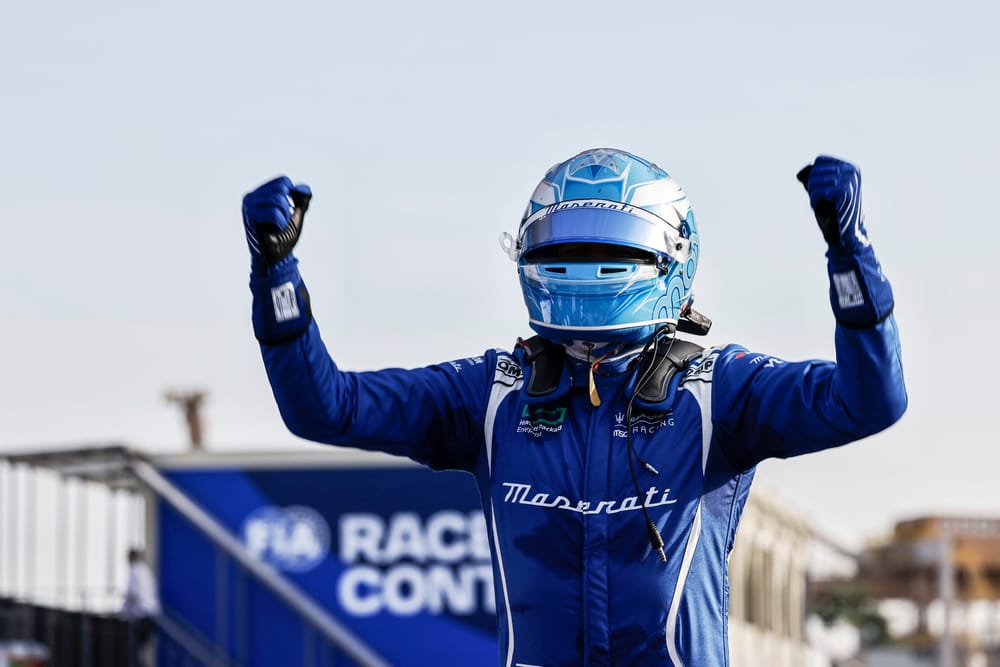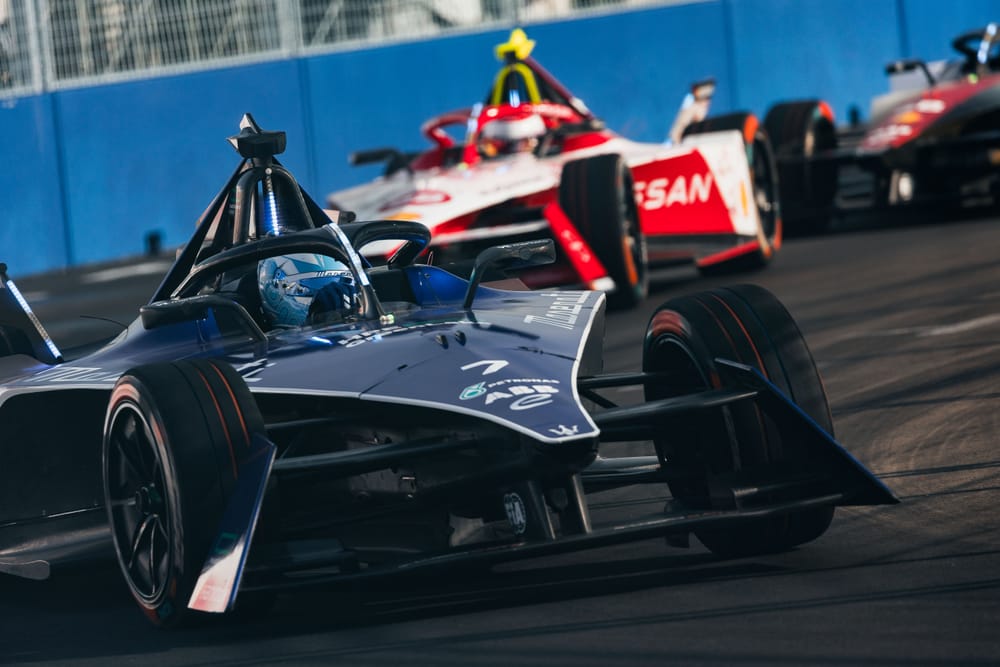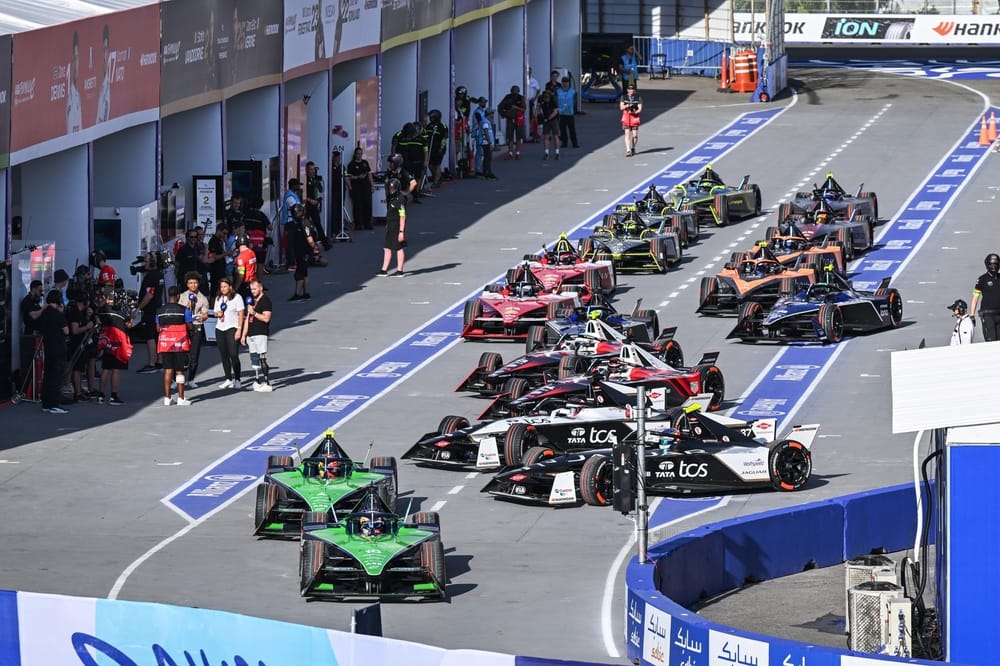When Maximilian Guenther slipped behind a reanimated Mahindra of Eduardo Mortara shortly after the lights went out for the Tokyo E-Prix, it looked unlikely that anything other than a sea of Sakura cherry blossom would fall upon a triumphant Oliver Rowland and Nissan 45 minutes later on the podium.
As Guenther stared at the back of the Mahindra for several laps he knew the initial gameplan of sitting behind Rowland’s polesitting Nissan to save energy was out of the window.
“We had to do the race a bit differently, save [energy] in the early stages but at the same time try to move up one or two places because I had really good pace and Oli [Rowland] was saving a lot in the twisty sections,” Guenther told The Race.
But at the same time as keeping pace with Mortara and Rowland, Guenther had pressure from behind from a marauding pack, that included initially both Porsches and then Jake Dennis’ hard-charging Andretti.
Far from navel-gazing and dithering, Maserati went on the offensive.
While a first attack mode sweep failed to leapfrog Mortara, Guenther shortly after did the trick anyway as he surged through on the gnarly approach to the plank-bottoming dipper of Turn 16.
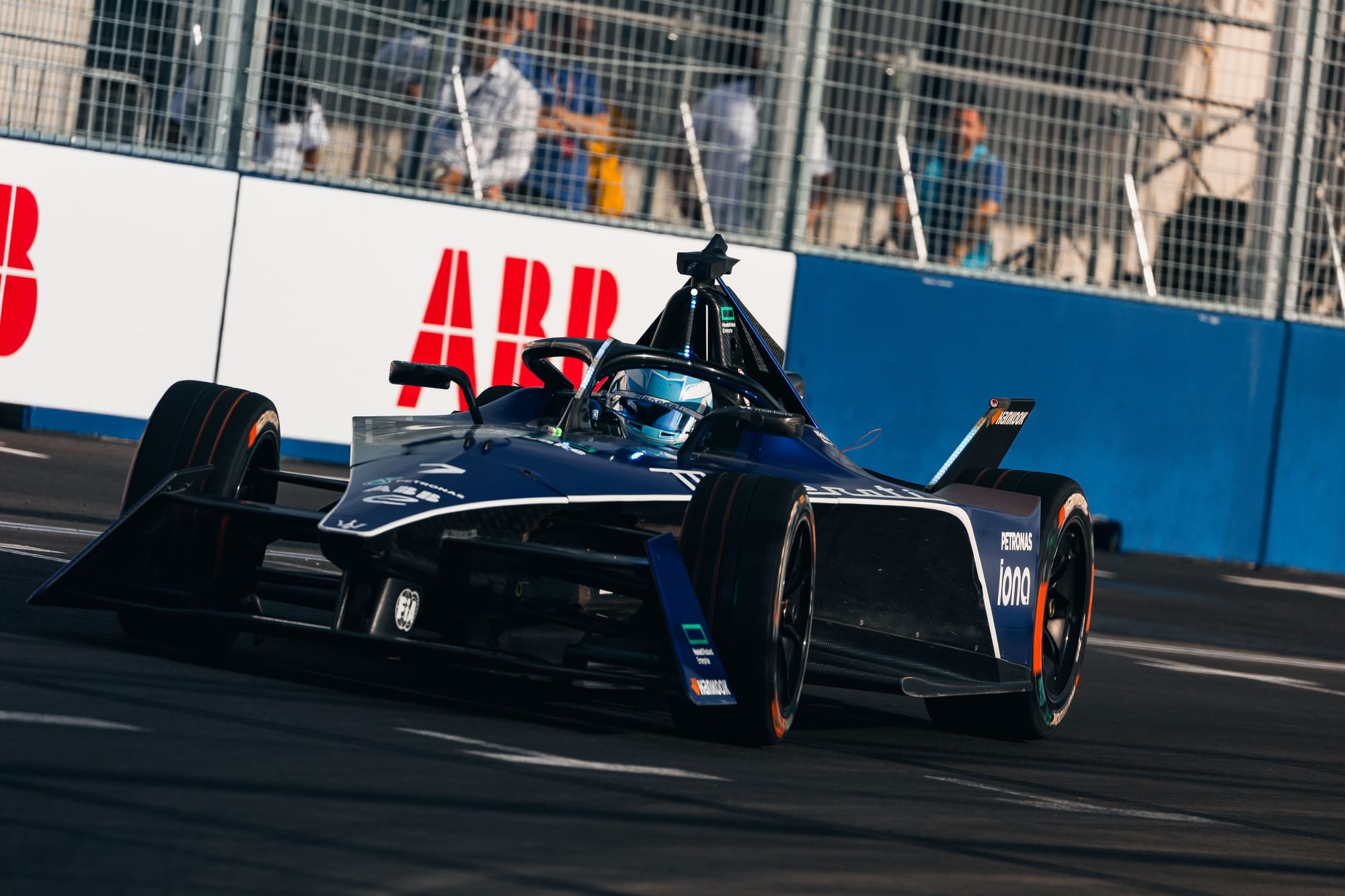
It was at this stage that the race “opened up for us” according to Guenther.
“We then had him [Mortara] as a buffer to the Porsche cars behind and I only had Oli in front of me which was enough of a challenge because he was defending perfectly,” he added.
It was an adapt (for a win) or settle (for a podium) decision, and the fact it went the way of the former showed a very elegant pivot from the Maserati MSG squad.
“We played the game; tried to be patient and adapt,” Maserati MSG’s head of engineering and also Guenther’s engineer Cyril Blais told The Race.
“But at one point we ended up between a rock and a hard place; either we’re trying to protect and save the podium or we had to go big and truly attack Rowland and go for the victory.”
DISASTER FOR EVANS 💥
— Formula E (@FIAFormulaE) March 30, 2024
The @JaguarRacing driver makes contact with @RFrijns and hits the barrier, bringing out the @PorscheRaces Safety Car.#TokyoEPrix pic.twitter.com/9uxml4mttf
What swung that decision was the safety car to retrieve bits of Mitch Evans’ shunted Jaguar.
That was when Blais and crew went “very aggressive with the strategy, which comes with some risks, but actually paid off.
“We were very glad about the way the team adapted and responded, so we were able to react to the race situation and deliver a winning strategy today.”
The role of intra-Porsche scraps
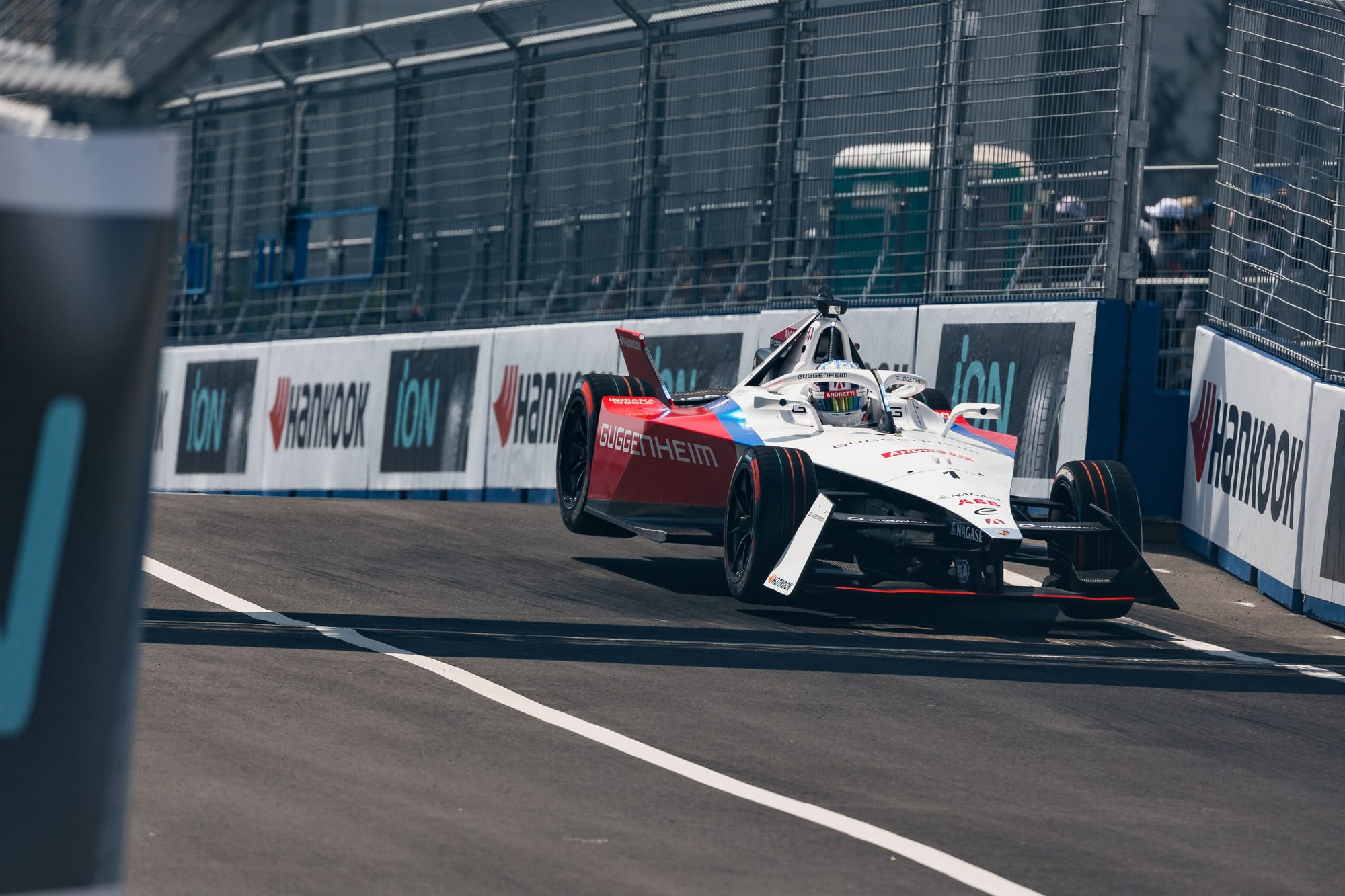
What happened behind Guenther and Dennis in the race acted like a kind of map-plotting for how the final third of it ultimately played out.
The quartet of Porsche-powered cars were reasonably quick throughout the race but it was the red and white Andretti duo that appeared to just have the edge on outright pace, particularly Jake Dennis.
“We were changing our strategy on the fly based on what others were doing in terms of the length of the attack modes,” Andretti team principal Roger Griffiths told The Race.
“We were trying to cover what was going on behind us and what we were noticing is that the time loss through the attack mode section was actually extending through the race. It was quite short [time loss] at the start, and as the race unfolded, time loss through that section got longer and longer.
“That was something we had to keep an eye on. In the early stages when we had slower cars around us we didn't want to get stuck behind the ERT (Sette Camara) for example.”
This adapting to the race and more bare-knuckle Dennis and Wehrlein and then Da Costa and Dennis sparring largely allowed Guenther and Rowland to duke it out at the front.
It was a memorable game of cat and mouse that meant the winner of the inaugural Tokyo E-Prix was not really to be decided until the final corner of the race.
Guenther’s Reverse-Psychology Move Proves Decisive
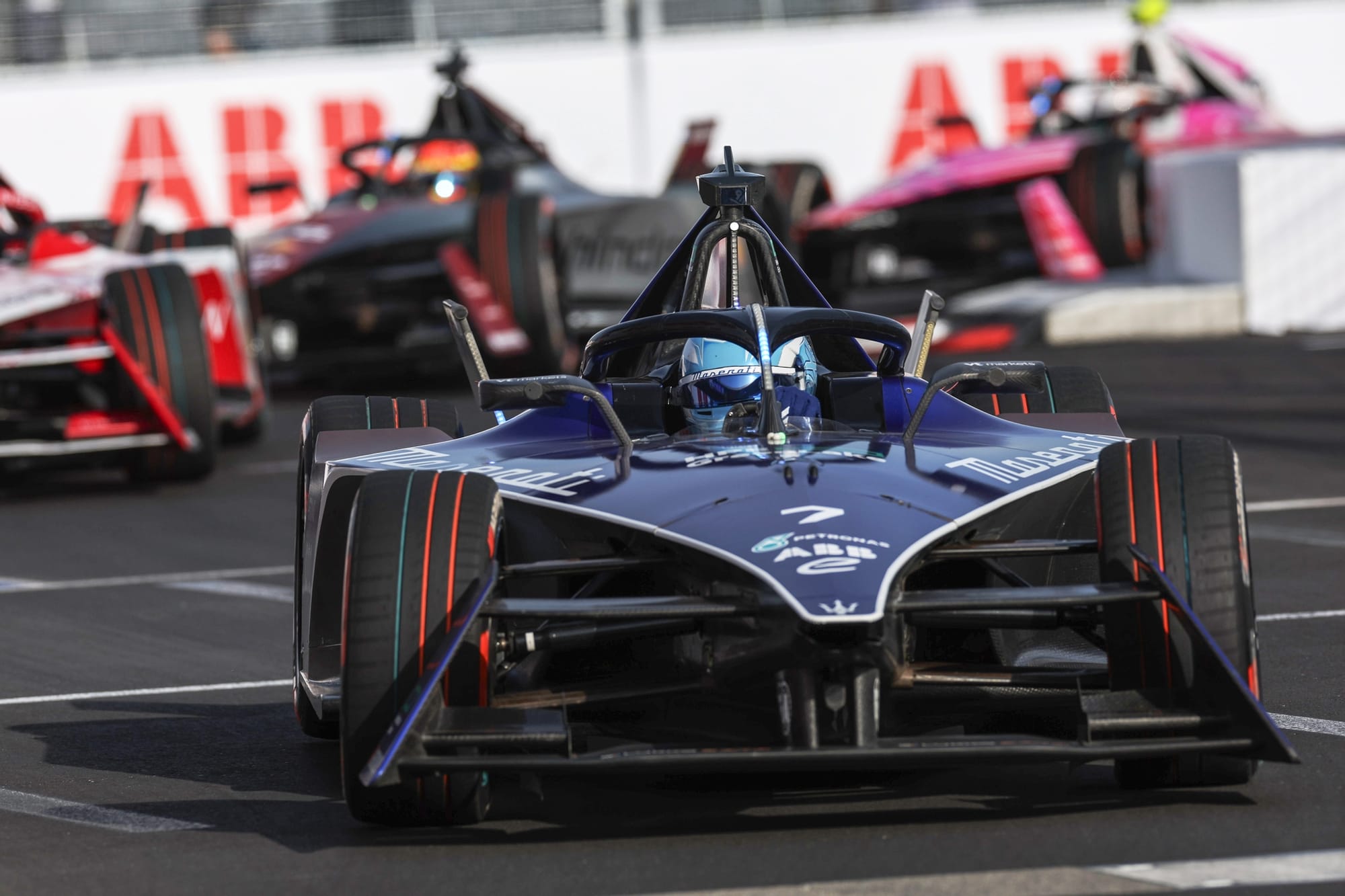
The long sweeping Turn 9 on the Tokyo Big Sight is a critical part of the Tilke-designed track, one that craves commitment and rewards with momentum down its following straight, the longest on the circuit.
Rowland told The Race that he was “mega [through Turn 9], it was unreal.
“To be fair, apart from Turn 12 my car was the, I was faster than everybody in all the corners,” he added.
But that wasn’t enough as Guenther was thinking laterally throughout his following in the slipstream. This not only gained both a saving of energy but also thinking time for Guenther to what would become the decisive move of the race.
“He (Rowland) did exactly what he needed to do and through Turn 9 he was always faster compared to me, and that’s why he was quite comfortable into Turn 10 for many laps,” reckoned Guenther.
“I tried all other options so I thought let’s try [selling the dummy]. It paid off.
“Because I never attacked him before, I sat back and then just surprised him a bit out of the blue and that’s how I got the lead.”
Günther snatches the lead from Rowland! 🏎️💨
— Formula E (@FIAFormulaE) March 30, 2024
No resistance from the @NISMO driver on this move. Günther is now pushing to extend the gap in front.#TokyoEPrix pic.twitter.com/EamAptUGot
So out of the blue came a nasty blue surprise for Rowland, who relinquished the lead without over-defending.
When in the slipstream in Gen3 cars, without the ornamental bodywork of the Gen2 design, drivers can under-consume handsomely. It really makes a difference.
Guenther benefitted from this effect. But in Rowland’s mind, it was his turn to feel ‘the tow.’
“It was at that point where I thought if he tries I’m probably going to let him go,” reflected Rowland.
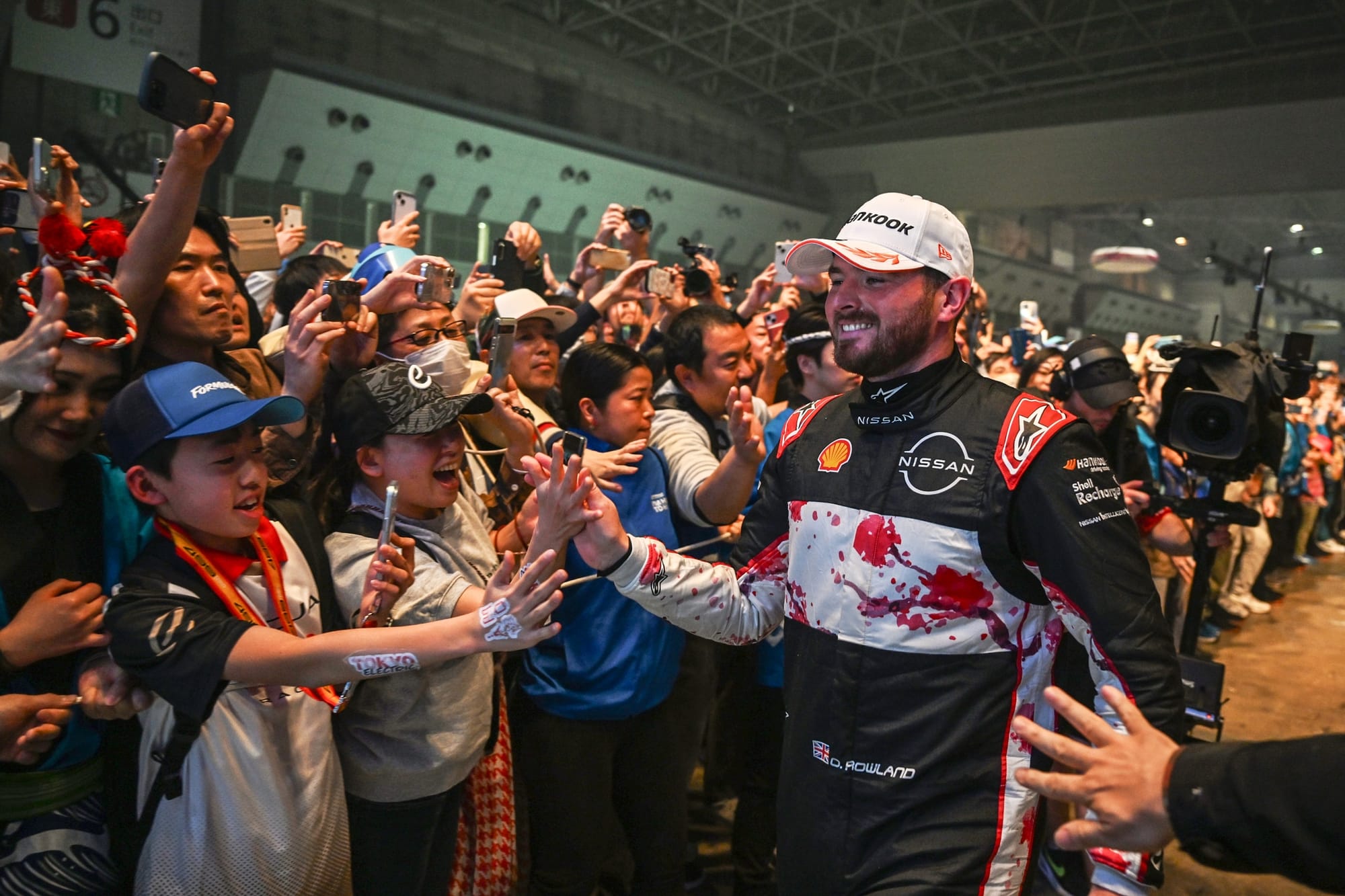
“He tried really aggressively and I had no choice in the end; the overspeed was massive. But I was still quite happy.”
Rowland actually then gave the Maserati a gap for Guenther to get his final attack mode because he “didn’t want to keep pushing because it was worse for my (energy) targets".
Guenther was pushing to take his attack mode and retain track position so Rowland could use the slipstream for what in his mind could be a glorious final stage mugging.
Guenther's security was strong but then his small advantage went to a disadvantage in the final few laps of the race as Rowland swarmed over his rear wing.
“It was not certain until really the last few corners if we were going to make it or not,” reflected Guenther.
Battling right to the end! ⚔️@maxg_official and @oliverrowland1 put on a proper show as they fought to the line for the race win 🍿#TokyoEPrix pic.twitter.com/vwHxNaV1Cj
— Formula E (@FIAFormulaE) March 30, 2024
Rowland had one final last-ditch attempt at Turn 15 but went to the outside and Guenther defended stoically.
With thousands of flag-waving Nissan fans in the grandstands and a phalanx of executives suits in the pitbox and hospitality awaiting a glory move, Rowland couldn’t quite make it stick despite “having a real go".
“I knew in Turn 15 realistically I wasn’t going to drive around the outside of him, no one would ever do that to me,” added Rowland
“So, it was more to try and get him to consume energy and see how much trouble he was in but he wasn’t.
“I was wondering if I could surprise him because he’d been going very slow off the jump on the run to T16 and I just thought if he’s a bit sleeping thinking no way there’s a chance to pass there.
“It got a bit close, to be honest; I stuck my nose in and was quite far up the inside and was kind of worried he hadn’t seen me and I didn’t want to make a big mess on the last lap.”
A runners-up place rather than a death or glory trip into the wall for Rowland, whose consistency has propelled him into the higher echelons of the title chase, was very much the right choice on this occasion.
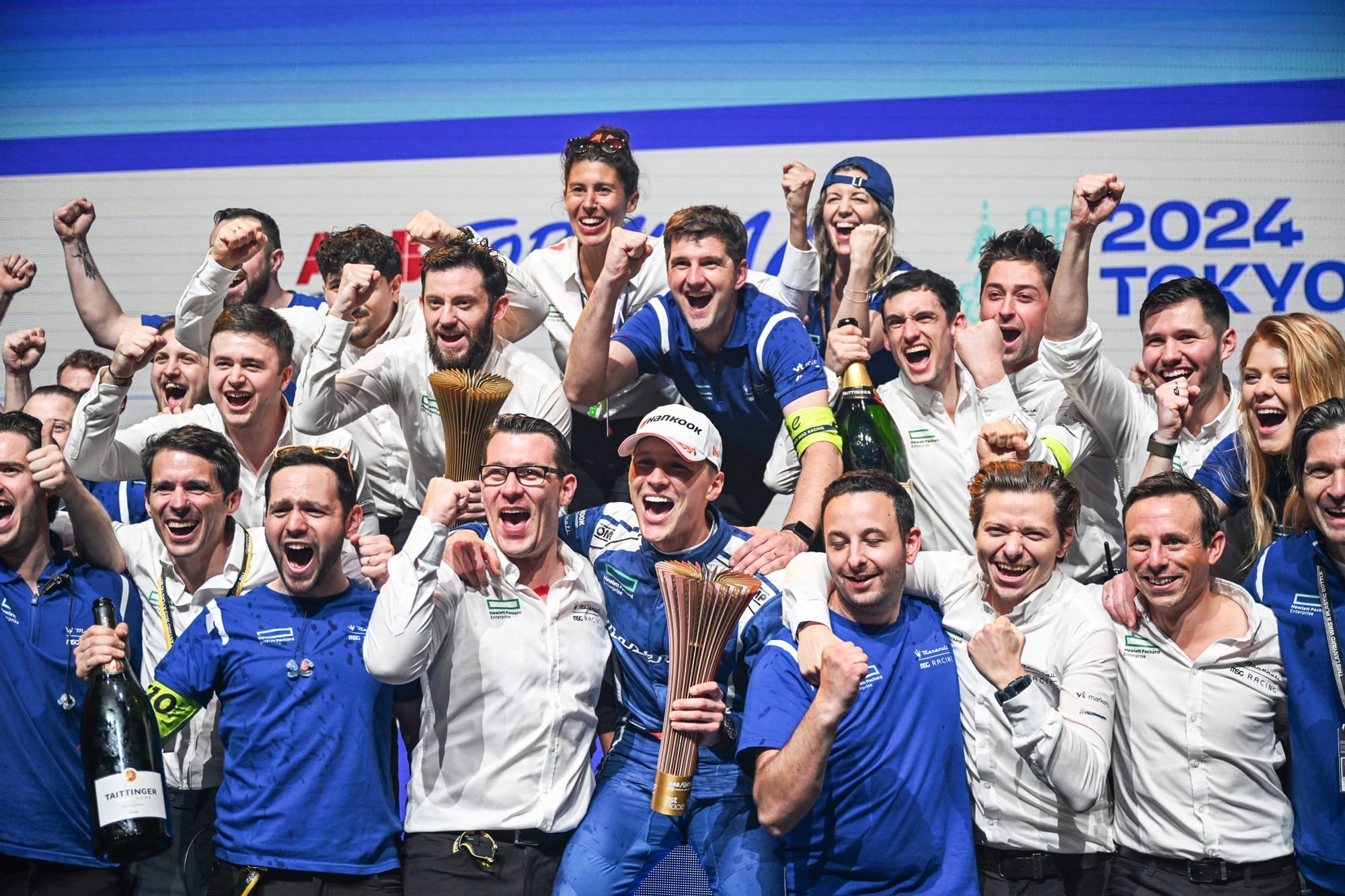
For Guenther, it was a fifth E-Prix win and perhaps his most satisfying, because, unlike Jakarta last July when he obliterated the opposition, on this occasion he and the Maserati MSG team got creative, and then they got victorious.


